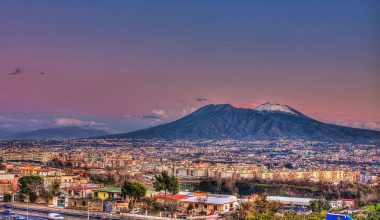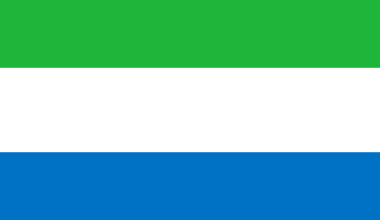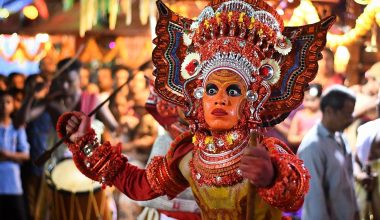Every country in the world has its own currency used for exchange in that region. The official currency of the region is accepted by all as the medium of exchange. Each nation adopts its own unique currency having different face values and made up of different materials. Here is the list of the highest currencies in the world,
Highest Currencies in the World
1. Kuwaiti dinar- ( USD rate: 3.24 And Code: KWD )
Using Indian currency as a medium of exchange up to 1958 and Persia Gulf Rupee till 1961, Kuwait announced its official currency after independence in 1961 as the Kuwaiti dinar. Becoming the highest valued currency in the world, the Kuwaiti dinar is used for all the functions carried freely and is controlled by the Central Bank of Kuwait. Though in 1990, the stealing of currency by Iraq forced the government to change the currency to the Iraqi Dinar but soon after freedom again Kuwaiti dinar became the official one and till then 5 series are printed so far. K.D. is the symbol used for this currency.

Image Source: Wikimedia
2. Bahraini Dinar- ( USD rate: 2.65 And Code: BHD )
The Bahrain dinar is one of the highest currencies in the world established in the year 1965 and currently it is only been used in Bahrain. The Bahrain Dinar has also tied to the US Dollar and its current exchange rate is 2.65 which keeps fluctuating. The currency can be divided into 1000 fils and it is usually represented with three decimal places denoting the fils.
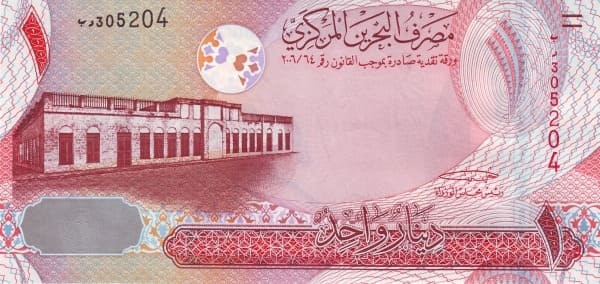
Image Source: Wikimedia
3. Omani rial- ( USD rate: 2.60 And Code: OMR )
Split into 1000 Baisa which indicates the further divisions in currency, the Omani rial is the national currency in Oman launched by the Central Bank of Oman. Using Gulf Rupee in the past, Oman started using the Omani rial in 1977 and is now the fourth highest value of the currency in the world. Using 5, 10, 25, and 50 Baisas coins and 100 or 200 baisas, ½ rial, 1 rial, 5 rials, 10 rials, 20 rials, and 50 rails, Oman has a total of 12 categories of notes and coins.
With the image of the Sultan of Oman named Sultan Qaboos bin Said al Said on one side of both coins and notes, the color of a note varies from green, Blue, or Brown, and the date of manufacturing of the coin is present on the other side of the coin.
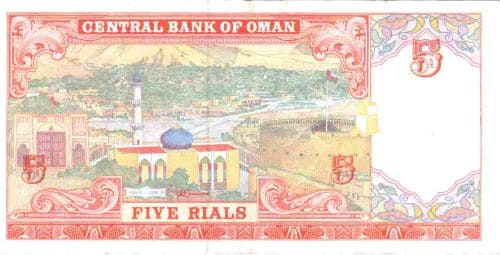
Image Source: Wikimedia
4. Jordanian Dinar- ( USD rate: 1.41 And Code: JOD )
The Jordanian Dinar is one of the highest currencies in the world Jordan since 1950. It is divided into 10 dirhams, 100 qirsh, and 1000 fulus. The current is also attached to the US dollar and its current exchange rate is 1.41. The central bank of Jordan started operations in the year 1964 and it is the sole issuer of Jordanian currency. The currency is also widely used in the West Bank along with the Israeli shekel.
Also Read: 10 Highest Waterfalls in the World By Hieght
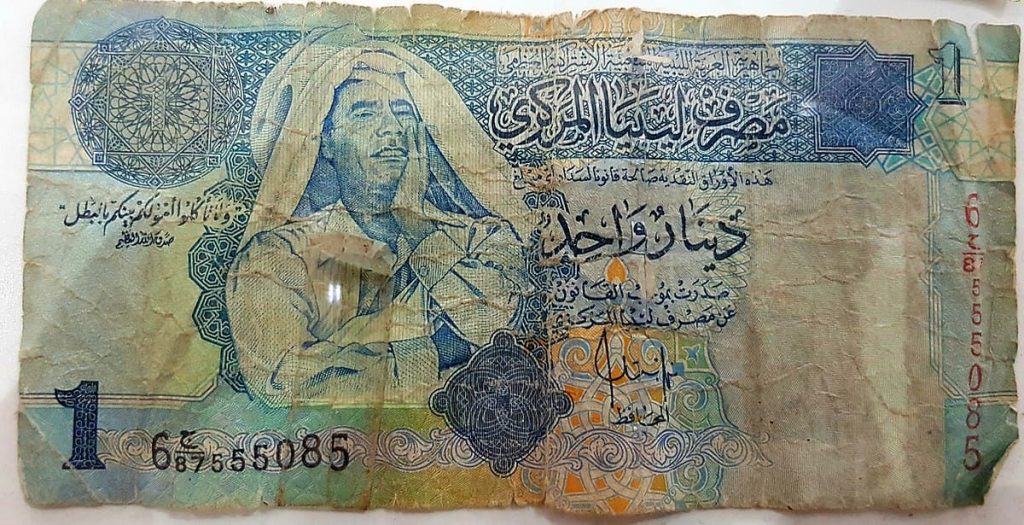
Image Source: Wikimedia
5. Cayman Islands Dollar- ( USD rate: 1.20 And Code: KYD )
The Cayman Islands Dollar is one of the highest currencies in the world and it is abbreviated with the dollar sign $, or CI$ in order to distinguish it from other dollar-denominated currencies. The currency is subdivided into 100 cents.
The dollar was introduced in the year 1972 after the separation from the Colony of Jamaica. Since April 1, 1974, The Cayman Islands Dollar was pegged to US Dollar at 1.20 USD. The sole authority for issuing banknotes is the Monetary Authority of the Cayman Islands (CIMA) in the denominations of 1, 5, 10, 25, 50, and 100 dollars.

Image Source: Wikimedia
6. British Pound sterling- ( USD rate: 1.14 And Code: GBP )
The oldest existing currency is the pound sterling and is derived from the Latin word Libra which stands for weight and balance. Bank of England had been issuing pounds for more than 300 years with continuous changes. In 1694, first-pound currency was used that was actually handwritten and not printed.
By 1660, coins came into existence, and ultimately pound sterling became the authorized currency of the United Kingdom. Notes of 5, 10, 20 and 50 pounds are available and are the fourth most used currency worldwide.

Image Source: Joegoauk Goa
7. Swiss franc- ( USD rate: 1.04 And Code: CHF )
The authorized currency of Switzerland is the Swiss franc. Not only in Switzerland, but it is also the official currency of Italian and German towns named Campione D’ltalia and Bussingen respectively. The currency is issued by the Swiss National Bank and the code of the currency is CHF which stands for Confoederatio Helvetica Franck. Called Safe Heaven, the Swiss economy is the safest economy found worldwide.
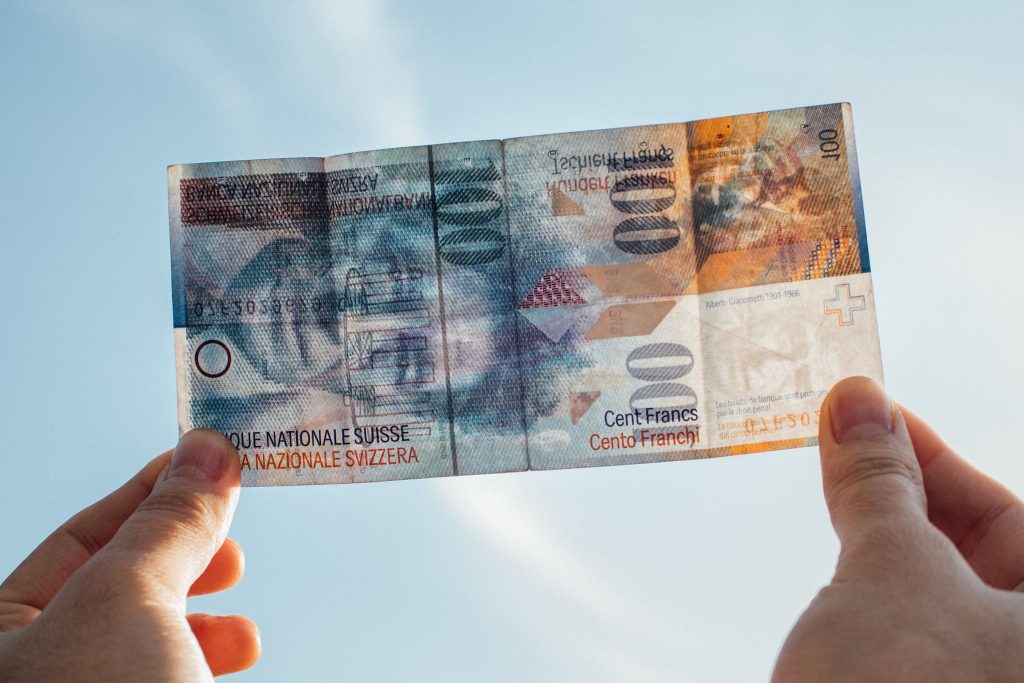
Image Source: Ivan Radic
8. European Euro- ( USD rate: 1.00 And Code: EUR )
Controlled and managed by the European System of Central Banks, Euro is used as the main currency in twelve European Union member states. The symbol f Euro is taken from the Greek word Epsilon. The first letter of the word Europe which is E is used with two parallel lines in the center of E which denotes stability. On the front side of the currency, windows are printed which symbolize the supremacy of openness and cooperation.
On the back side, bridges are printed which denotes communication between European people and Europe with all rest of the world. For international payments, loans, borrowing, and reserves, Euro is the second most used currency after Dollar.
Also Read: Top 10 Most Famous Walls In The World

Image Source: Wikimedia
9. United States Dollar- ( USD rate: 1 And Code: USD )
The official currency of America is United States Dollar. This dollar is not only used by the US but also by other countries. From selling products like gold and oil, the US dollar is the currency used in international markets. Known as USD, the American dollar is denoted as $. Currencies of 1, 2,5,10, 20, 50 and 100 dollars are available. Coins are also available which usually are gold or silver colored. Made of 100 cents, the US dollar is a standard currency used worldwide. The currency notes are not made of paper but in fact, 75% cotton and 25% linen are used.
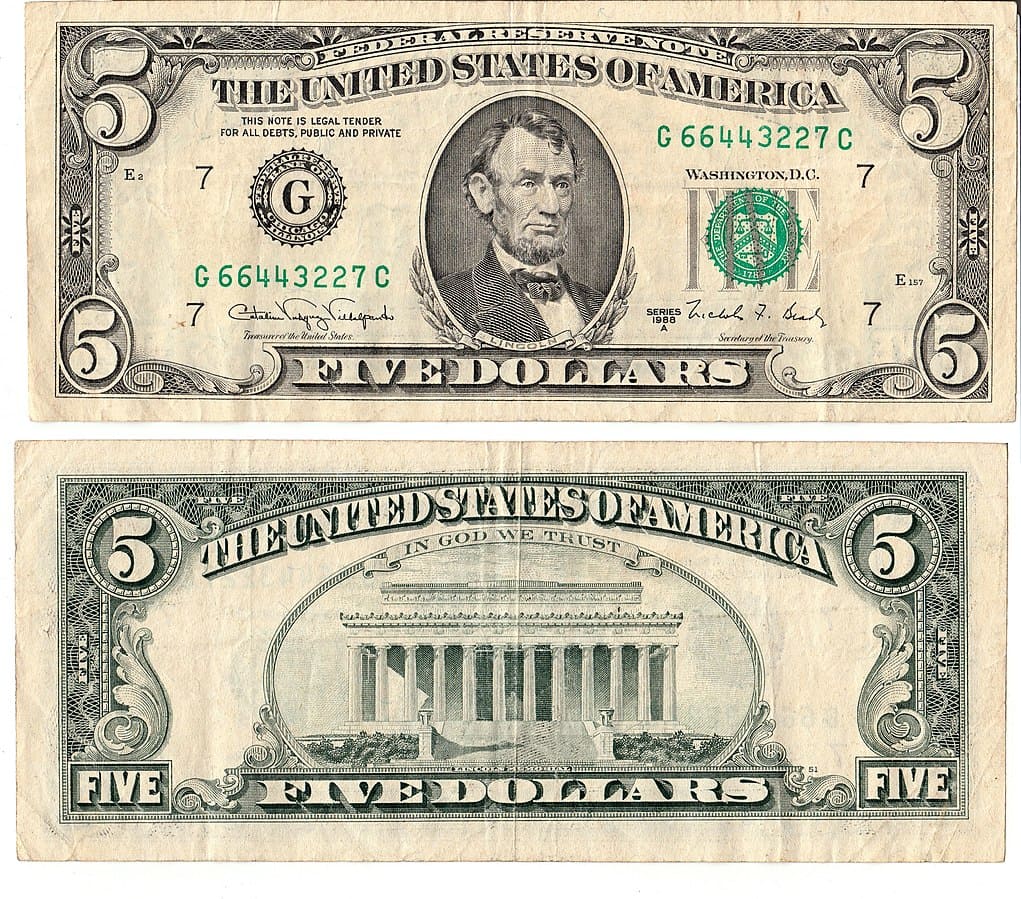
Image Source: Wikimedia
10. Bahamian Dollar- ( USD rate: 1.00 And Code: BSD )
The Bahamian dollar is the currency of The Bahamas since 1966. The currency is divided into 100 cents. The symbol used for teh dollar is B$ is used to distinguish it from other Dollar currencies. The Central Bank of the Bahamas became the official supplier of Bahamian banknotes. The various businesses in the country accept both the Bahamian Dollar and the US Dollar.
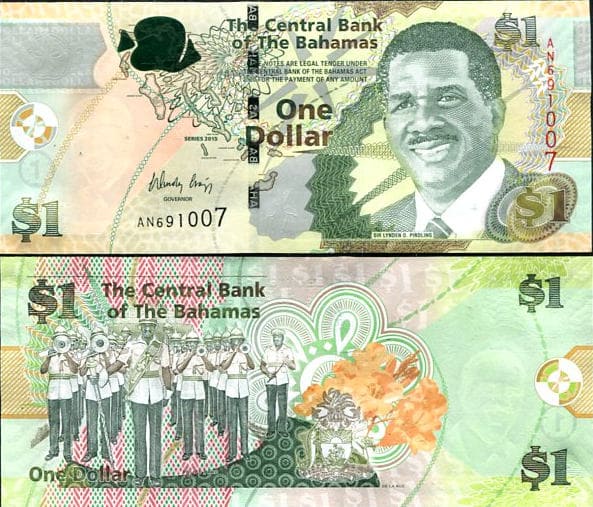
Image Source: Vincent
11. Bermudian Dollar- ( USD rate: 1.00 And Code: BSD )
The Bermudian dollar is the official currency of the British Overseas Territory of Bermuda. One of the highest currencies in the world is subdivided into 100 cents. It is often represented with the dollar sign as BD$. The Bermudian dollar (BMD) is pegged to the U.S. dollar at a rate of 1:1. The Bermudian dollar replaced the Bermudian pound in the year 1970.

Image Source: Pinterest
12. Canadian dollar- ( USD rate: 0.75 And Code: CAD )
One of the highest currencies in the world commencing in 1858, Canada started using dollars instead of pounds. Canadian Central Bank started in 1934 and today notes of 5,10,20,50 and 100 dollars are available. One Canadian dollar is known as Loonie. Loonie is an aquatic bird printed on the backside of the Canadian note. Two Canadian dollar coins have polar bears printed on them and are known as Toonie. Symbolized as $, Canadian currency is the fifth most detained overturned currency. Canadian banks themselves can print and buy currency to maintain the value of Canadian currency.

Image Source: Wikipedia
13. Brunei Dollar ( USD rate: 0.73 And Code: BND )
The Brunei dollar is the official currency of the Sultanate of Brunei since 1967. The currency is issued by the Autoriti Monetari Brunei Darussalam and under the currency Interchangeability Agreement in 1967 they can be interchanged with the Singapore dollar at par. In order to distinguish it from the dollar currencies the symbol B$ is used. Brunei is small it has a wealthy economy and it’s mainly industry-based that accounting for 74% of the total GDP. Brunei owns a cattle farm in Australia that is the main source of meat for Brunei.
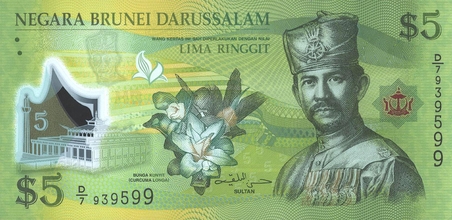
Image Source: Wikipedia
14. Singapore Dollar- ( USD rate: 0.71 And Code: SGD )
The Singapore Dollar (SGD) is the official currency of the Southeast Asian island state of Singapore. It is abbreviated as SGD and represented by the symbol S$. The notes were printed in denominations ranging from S$2 to S$10,000 and it is issued by the country’s central bank which is the Monetary Authority of Singapore, since 1985. It is also one of the highest currencies in the world with a rare AAA rating from Fitch Ratings.

Image Source: Wikimedia
15. Australian Dollar- ( USD rate: 0.67 And Code: AUD )
One of the highest currencies in the world, made up of polymer, the Australian Dollar is the official exchange of Australia since 1966 and the material polymer not only provides life to the currency notes but also gets converted into plastic at the end. Also renowned as buck, dough, or Aussie, the Reserve Bank of Australia is responsible for currency matters in Australia. With the notes of 5, 10, 20, 50, and 100 dollars coins of 1, 2 dollars, and 5, 10, 20, and 50 cents are also available and the Australian Dollar is the fifth highest-valued currency in the world.

Image Source: Ludovic Landry
16. New Zealand Dollar- ( USD rate: 0.60 And Code: NZD )
The Singapore Dollar (SGD) is the official currency of the Southeast Asian island state of Singapore. It is abbreviated as SGD and represented by the symbol S$. The notes were printed in denominations ranging from S$2 to S$10,000 and it is issued by the country’s central bank which is the Monetary Authority of Singapore, since 1985. It is also one of the highest currencies in the world with a rare AAA rating from Fitch Ratings.

Image Source: Sasha India
17. Azerbaijan Manat ( USD rate: 0.59 And Code: AZN)
Azerbaijan Manat is one of the highest currencies in the world used in Azerbaijan and as of now, three Manat currencies issued. The first manner was issued in 1919 and was in circulation until 1923. Later, when the country become part of the Soviet Socialist Republic, the manat was known in Russia as the Ruble.
The Russian ruble was replaced by the second Azerbaijan Manat in 1992 and the last Azerbaijan Manat introduced in 2006 is currently the national currency. The main economic activity in the country is oil and it is one of the fastest-growing economies in the world. The top industries in the country are petroleum and petroleum products followed by cement, textiles, ore, iron, natural gas, cotton, and foodstuffs.
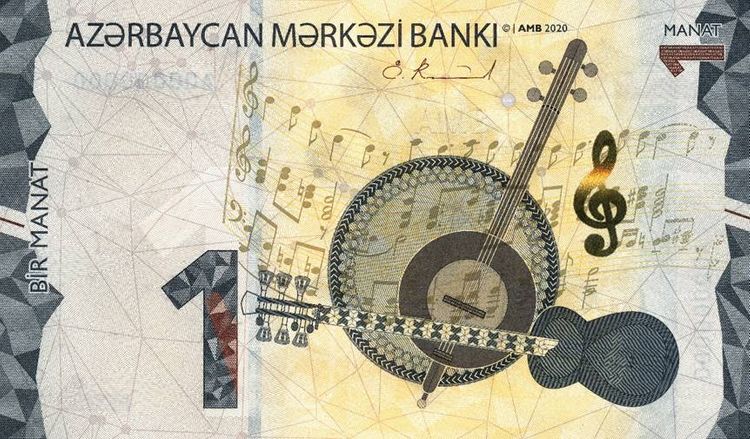
Image Source: Wikimedia
18. Dutch Guilder ( USD rate: 0.56 And Code: ANG)
Dutch guilder is the official currency of the Netherlands from the 15th century until 2002 and later it was replaced by the euro. The Dutch name gulden was initially introduced in the year 1434 and its value was about par with the Italian gold florin. It was also the de facto reserve currency in Europe in between the 17th and 18th centuries.

Image Source: Wikimedia
19. Bosnian Convertible Mark ( USD rate: 0.51 And Code: BAM)
The Bosnian Mark (BAM) is the official currency of the country of Bosnia. The mark was later subdivided into 100 fenings and Bosnia uses the same fixed rate as the German Mark of 1.935583 BAM = 1 Euro. The Bosnian Mark is also known as the Bosnia and Herzegovina Convertible Mark.
The main industries of the country are zinc, coal, iron, aircraft, vehicles, textiles, tobacco, oil refining, domestic appliances, ore, manganese, steel, and lead. The Dinar was replaced by the Bosnian Mark (BAM) in 1995 because of the Dayton agreement. The coins were introduced in the year 1998.
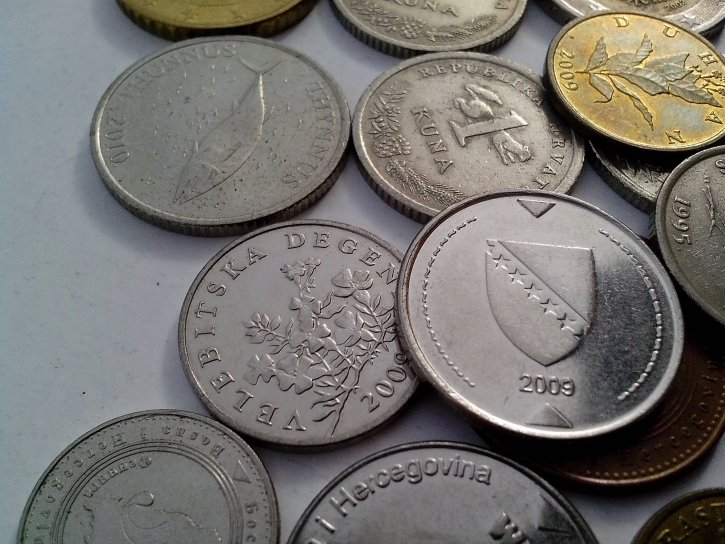
20. Bulgarian Lev ( USD rate: 0.50 And Code: BGN)
Bulgarian Lev is the official currency of Bulgaria till 2015 and later it was changed to Euro. The Lev is pegged to the Euro at a rate of 1.95583 Leva = 1 Euro. The main industries of the countries are base metals, water and gas, tobacco, electricity, refined petroleum, chemical products, food, and coke. The Lev currently used in Bulgaria was introduced in 1995.
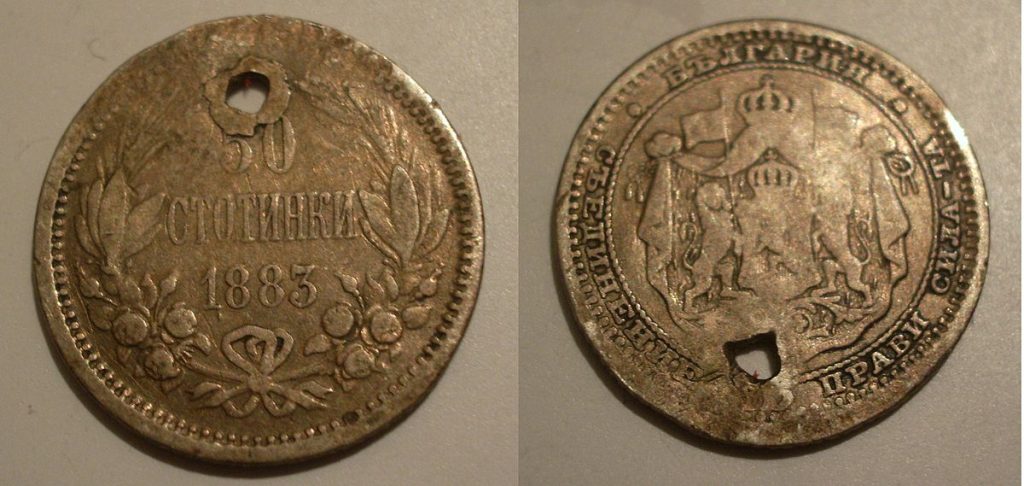
Image Source: Wikimedia
21. Barbadian Dollar (BBD) = $0.50 USD
The Barbados dollar is one of the highest currencies in the world denoted as BBD, is the official currency of Barbados. It’s represented as Bds$ and is regulated by the central bank of the country. Barbadian banknotes are available in various denominations starting from Bds$2 to Bds$100. Moreover, the currency is divided into 100 cents. Coins are minted in values ranging from one cent to Bds$1. The BBD is fixed at a specific exchange rate with the United States dollar (USD).
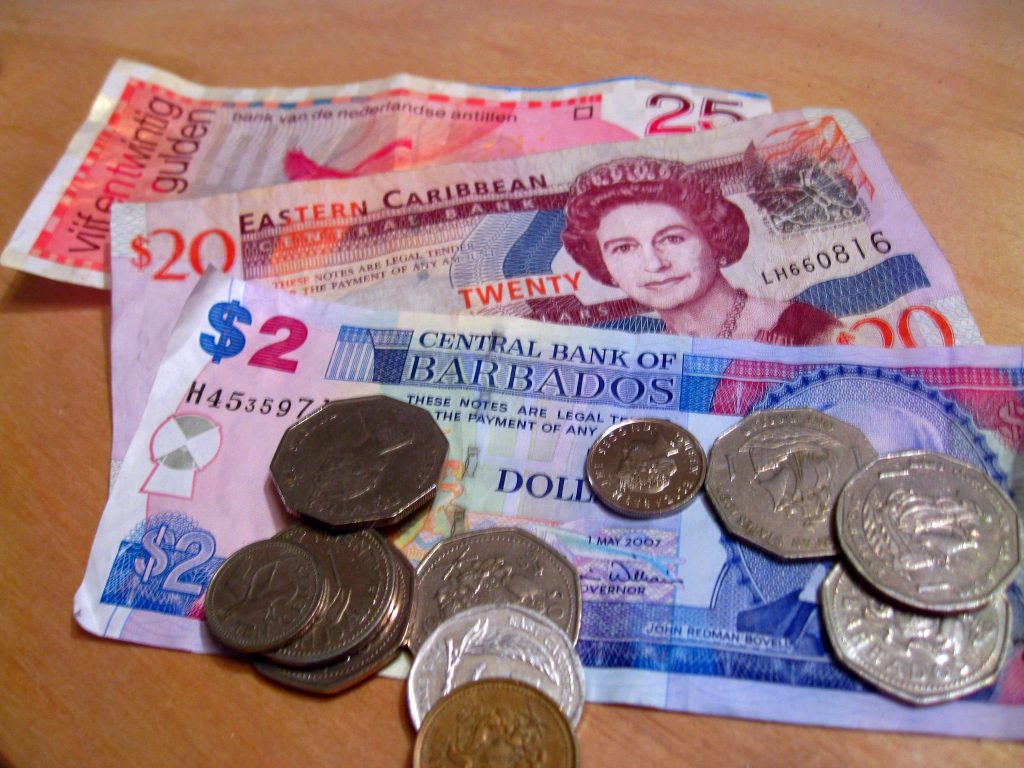
Image Source: Jenny
22. Fijian Dollar (FJD) = $0.43 USD
The official currency of Fiji is the Fiji Dollar (FJD), represented by the dollar sign. To distinguish it from the US Dollar, the symbol FJ$ is used. The Fiji Dollar is divided into 100 cents. Fiji has a well-developed economy among Pacific islands, with a significant reliance on tourism. The Fiji Dollar was first introduced in 1867, used until 1873, and then reintroduced in 1969. The Reserve Bank of Fiji began issuing banknotes in 1987. In 1995, the $1 bill was replaced with a coin, and a $50 note was introduced. In 2006, plastic-coated notes were introduced, and in 2007, the first $100 banknote was issued by the Central Bank of Fiji.

Image Source: Wikipedia
23. Georgian Lari (GEL) = $0.40 USD
The Georgian lari serves as Georgia’s official currency and is commonly exchanged with the US dollar. It is represented by the currency code GEL and its symbol is a distinctive three-quartered circle, open in the lower-right quadrant. This symbol was introduced by the Governor of the National Bank of Georgia (NBG) in July 2014 and features two vertical lines at the top, resting on a platform equal in length to its diameter. This symbol was created as part of a design competition in 2013 with the intention of bringing out something that is easy to produce and reminiscent of the Georgian alphabet.
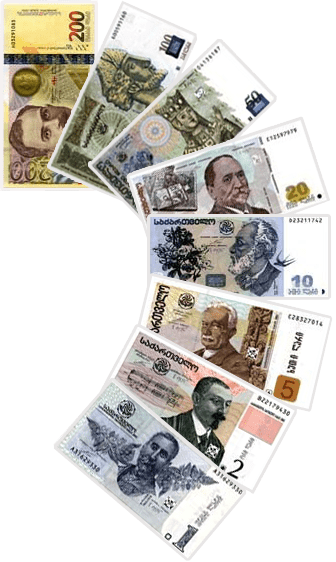
Image Source: Wikimedia
24. Belarusian Ruble (BYN) = $0.39 USD
Belarus uses the Belarusian Ruble (BYR) as its official currency, symbolized as Br. In 2008, Belarus shifted the peg of the Belarusian Ruble from the Russian Ruble to the US Dollar, although it’s not an official peg. The Belarusian economy has demonstrated steady growth at around 9%. The first Belarusian Ruble was introduced in 1992 but due to Belarus’s inability to produce Soviet Union banknotes. Initially, only banknotes were in circulation, and in 2000, coins were introduced. In 2009, the Central Bank of Belarus made an exchange rate adjustment of approximately +/- 20%. Furthermore, in 2011, there was another significant exchange rate adjustment by the Central Bank of Belarus, this time by about +/- 56%.

Image Source: Wikimedia
25. Samoan Tala (WST) = $0.35 USD
The currency of Samoa is the Samoan Tālā, symbolized as WS$ to distinguish it from other types of dollars. The Tālā is divided into 100 sene, with both Tālā and sene being used alternatively for the English terms Dollar and Cent. Samoa adopted the Tālā as its currency in 1967, following its political independence from New Zealand in 1962. This new currency replaced the Pound at a conversion rate of 2 Tālā for every 1 Pound. It was the prevailing exchange rate for the New Zealand Dollar to the Pound at that time.
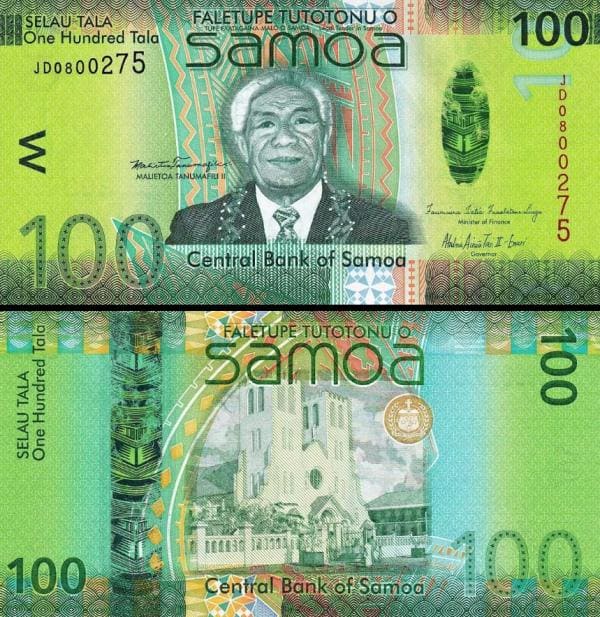
Image Source: Vintage
26. Israeli Shekel (ILS) = $0.27 USD
The official currency of Israel is the Israeli New Shekel (ILS). It is issued by the Bank of Israel. The term “Shekel” has its roots in an ancient unit of weight, approximately equivalent to one ounce or 12 grams. This currency is fully convertible and is actively traded in foreign exchange markets through currency futures contracts. The Israeli New Shekel was introduced in 1986, replacing the old Israeli Shekel, which, in turn, had replaced the Israeli Lira in 1980. The New Shekel is divided into 100 agorot.
Currently, there are coins in circulation with denominations of 10 agorot, ½ shekel, 1 shekel, and 2, 5, and 10 shekalim. Before the introduction of the New Shekel, the Israeli Lira was in use as the currency of Israel from August 1948. In the 1960s, there was a significant debate about the non-Hebrew name of the currency, leading to a legal mandate to replace it with the Shekel. The Shekel was officially introduced on February 24, 1980, at an exchange rate of 1 Shekel for 10 Lirot.
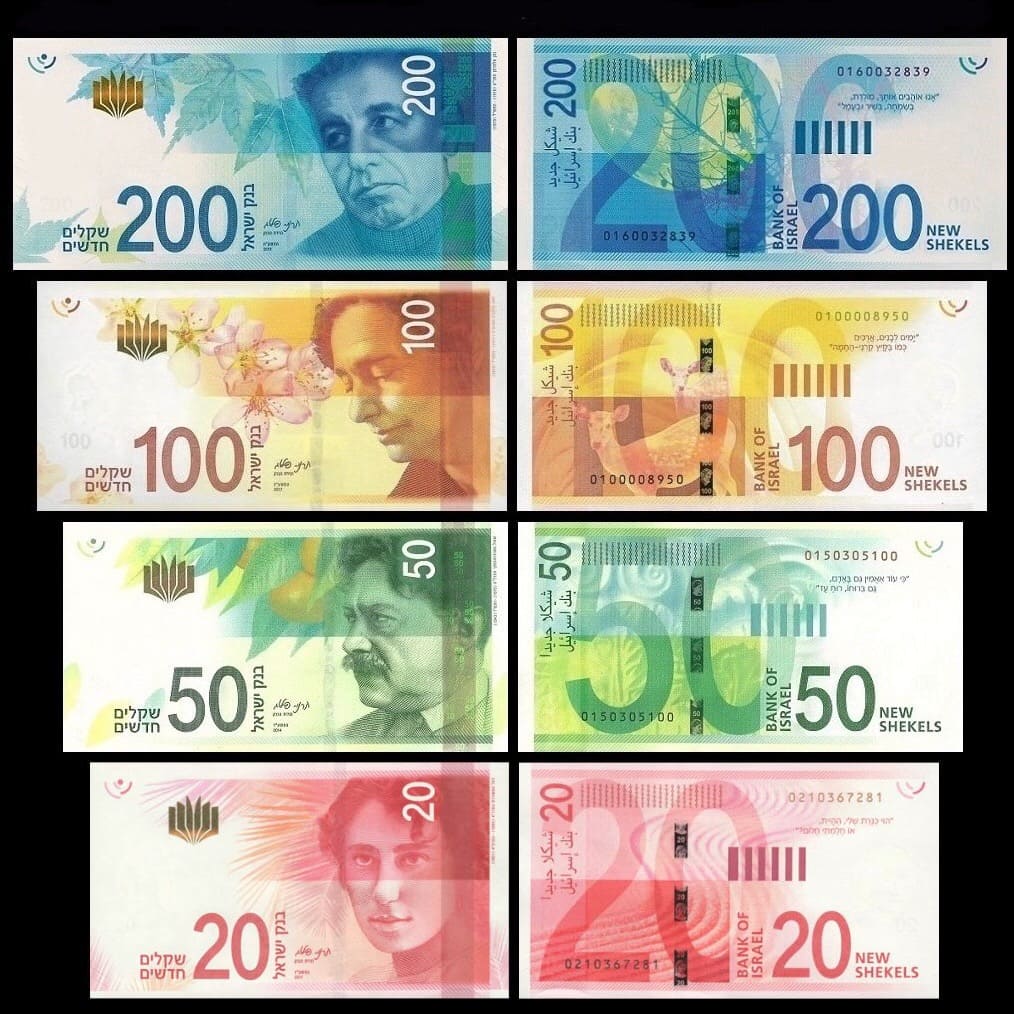
Image Source: Wikimedia
27. Emirati Durham (AED) = $0.27
The United Arab Emirates dirham is the official currency of the country. It was introduced on May 19, 1973, replacing the Qatar riyal. It is divided into 100 fils. When the dirham was first introduced in 1973, it included coin denominations of 1, 5, 10, 25, 50 fils, and 1 dirham. The 1, 5, and 10 fils coins were made of bronze, while the others were composed of cupronickel. These fils coins had the same size and composition as the corresponding Qatar riyal. In 1995, there were changes to the coinage. The 1, 5, and 10 fils, as well as the 1 dirham coins, were made smaller in size. The new 1 dirham coin shared the same diameter as the old 50 fils coin, and the new 50 fils coin was of small size and had a heptagonal shape.

28. Malaysian Ringgit (MYR) = $0.23
The currency of Malaysia is the Malaysian Ringgit. It is identified with the code MYR. Malaysian banknotes come in denominations of RM100, RM50, RM20, RM10, RM5, and RM1, and there are also 50 sen (cents) coins, along with 20 sen, 10 sen, and 5 sen coins. The term “Ringgit” has its origins in the Spanish silver coins that were widely circulated in ancient times. Since August 1975, “Ringgit” has been officially recognized as the proper name for the Malaysian currency. Previously, the currency was referred to as the dollar in English and Ringgit in Malay. However, the symbol “$” continued to be used until it was replaced by “RM” in 1993. It is a symbol still in use today.
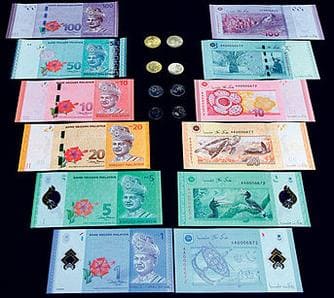
Image Source: Wikipedia
29. Libyan Dinar (LYD) = $0.20 USD
The official currency of Libya is the Libyan Dinar, which is further divided into 1000 dirhams. Historically, during the Ottoman Empire’s rule in Libya, Ottoman Empire piastres were in use. Later, under Italian rule, the Italian Lira led to a variety of foreign currencies being used. In 1951, when Libya gained independence, the Libyan Pound was introduced as its currency. Subsequently, in 1971, the Central Bank of Libya introduced the Libyan Dinar. Over the years, there were additional coin denominations issued, including ¼ and ½ dinar coins in 2001 and 2004. In 2009, new coin denominations of 50 and 100 dirhams, as well as ¼ and ½ dinar coins, were introduced.

Image Source: Wikimedia
30. Brazilian Real (BRL) = $0.19 USD
Since 1994, the Brazilian real has served as the official currency in Brazil, and it currently holds the position of the strongest currency in all of Latin America. Over the years, this currency has undergone several transformations as a result of the economic challenges faced by the country. In 1994, the Brazilian real was introduced to replace the cruzeiro real, with an exchange rate of 1 Brazilian real equal to 2,750 cruzeiro reals, roughly corresponding to the average exchange rate of the US dollar. This change was implemented to stabilize Brazil’s economy. Subsequently, in 1999, the Brazilian real transitioned to a floating currency, leading to a notable devaluation where 1 USD equated to 2 BRL.

Image Source: Wikimedia
These are the highest currencies in the world. Kindly share and do post your comments.

